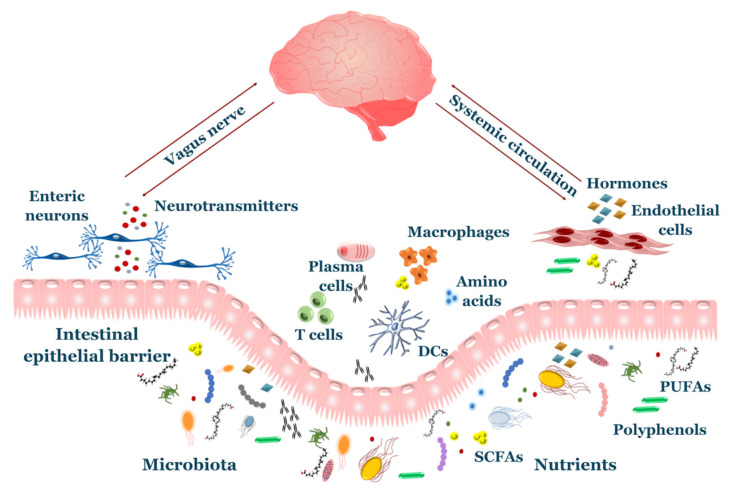Figure 1.
Overview of gut–brain axis. The gut and brain communicate through an intensive crosstalk involving neuroendocrine axis, circulating metabolites and immune system. Nutrients and microbial products pass through the intestinal epithelial barrier where they participate on enterocytes’ physiology and drive behavior of immune cells. The enteric nervous system uses numerous signals to sense the gut environment, including neurotransmitters produced by microbiota. Afferent fibers (vagus nerve/sympathetic nerves) transmit these signals to the central nervous system (CNS). Gut-derived hormones and metabolites are released to the systemic circulation and reach the brain.

